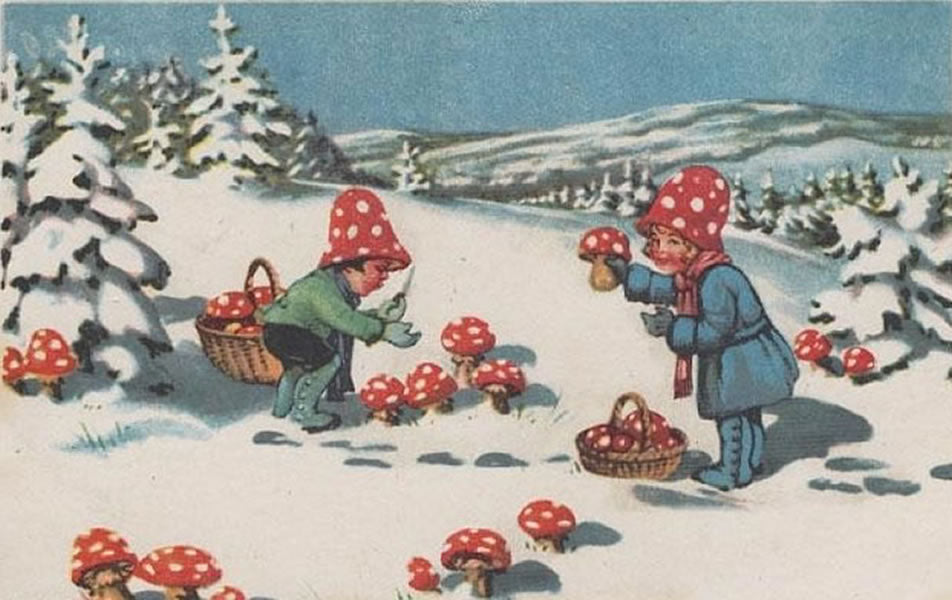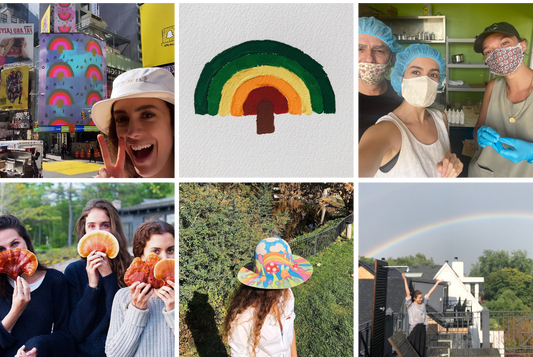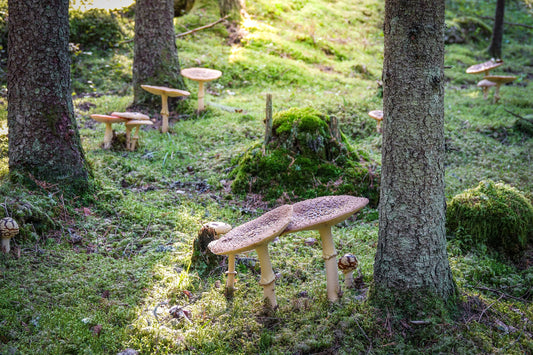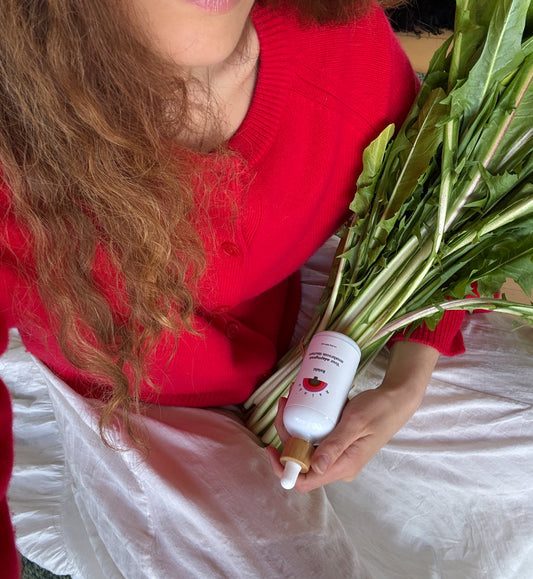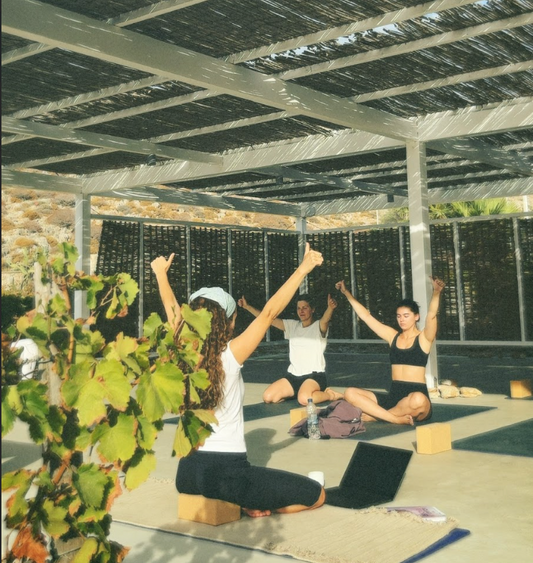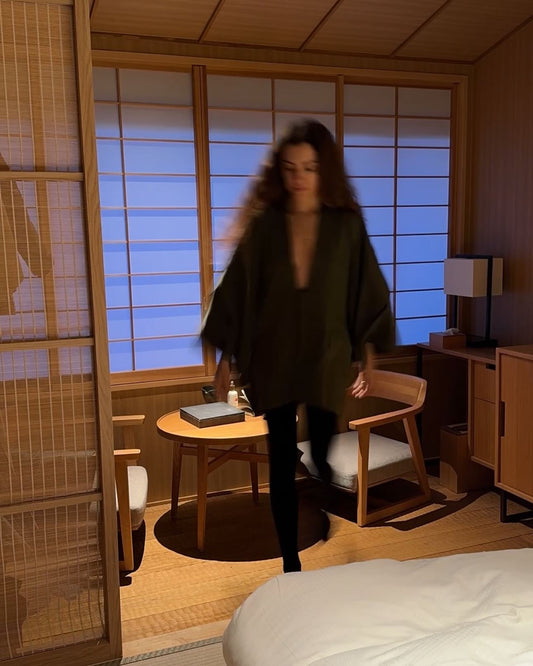Santa was a Shaman
The most famous mushroom in pop-culture is a psychedelic mushroom - the iconic toadstool with a red cap and white dots is called Amanita muscaria. This colourful mushroom is found growing directly underneath conifer trees such as pine, spruce, and fir, in a symbiotic tree-fungus relationship. A strong meme throughout many cultures, the Amanita is known for its hallucinogenic properties (however it also produces toxins and is classified as poisonous).
The fame of this red and white mushroom may be akin to the fame of a historical icon also associated with the same colour palette.
During this time of year we remember the story of Santa Claus - the man who travels from the North Pole with his flying reindeer, bearing gifts for each family delivered via a chimney. A lesser known story is about how Santa might have actually been a psychedelic mushroom-eating shaman from Siberia. The depictions of the red and white mushrooms in antique European Christmas cards, and the prominence of Amanita Christmas ornaments, could be hinting at a deeper connection between Santa and shrooms.
The origins of Santa can be traced back to the Siberian and European North, where the practices of the native shamanism have uncanny resemblances to the traditions of Christmas. In particular, the Amanita muscaria is a significant connection between the two. Within groups of scholars who study these cultures, there is little debate that the Arctic shamans gave out mushrooms on the Winter Solstice. These medicine men would pick the Amanita in summer, hanging them to dry on the evergreen trees growing above them. The mushrooms may also be taken inside to dry by the fireplace, begging for comparison to stockings and a Christmas tree littered with red & white parcels. The drying of the mushrooms was one way to remove the toxins found in Amanita muscaria, while increasing the potency of psychedelic compounds. Come late December, on the Winter Solstice, the shaman would gather up the dried Amanitas and make use of the mushroom’s psychoactive effects to commune with the spiritual world and bring gifts of healing to the families, as they set intentions for the new year. If the hut’s doorways were covered in snow, the shaman would enter through an opening in the ceiling.

Image by SagaciousMama.com
The indigenous people were not the only ones with an appetite for these particular mushrooms. The native reindeer, common to these northern regions of the world, also sought out the Amanita muscaria as a snack. In fact, another way the shamans would detoxify the mushroom was to allow it to pass through the reindeer’s digestive system, and collect and consume the urine which would be free of toxins, yet concentrated in hallucinogens. Whether the fable of flying reindeer is based on subjective experience in an altered state of mind or not, it remains true that reindeer exist at the heart of these cultures. The indigenous people inhabiting the European Arctic Circle are nomadic reindeer herders - the traditional dress consisting of brightly coloured winter suits.
The similarities in tradition may be undeniable to some: a Winter Solstice celebration of gifts with snowy arctic origins, where reindeer are prominent, consisting of pine trees and fireplaces hung with colourful decorations, chimney entrances, and garb of red and white trim. A mushroom-induced spiritual and hallucinogenic journey paired with tales of a flying red-nosed reindeer - was Santa the archetypal shaman?
Regardless of where the origin of Santa Claus comes from, this time of year is a time of rebirth, setting intentions, gifting to loved ones and communing with family... and perhaps, unknowingly, celebrating a mushroom.
Header Image: courstey of U.S. Forest Service.
